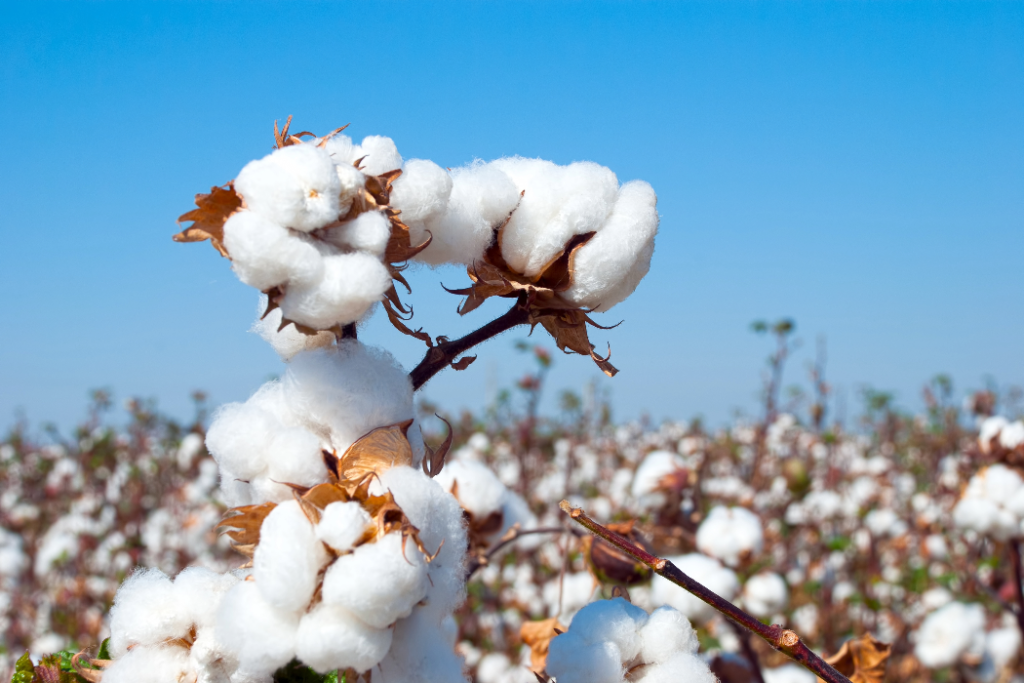The global textile industry is a multi-billion-dollar sector that influences everyone, from raw material producers to end consumers. However, this industry has faced serious sustainability and ethical issues. As consumers become more conscious of these problems, certifications like the Global Organic Textile Standard (GOTS) have gained prominence. This article explores what GOTS Certification is, its significance, and why it should matter to you.
Definition of GOTS
GOTS is a leading textile processing standard for organic fibers (i.e. cotton, silk, linen, wool, and hemp) in the apparel and home industry. GOTS evaluates a product starting from the raw materials and all the way through the post-harvest processing (including spinning, knitting, weaving, dyeing, and manufacturing). It includes stringent environmental and social criteria at every level of the supply chain, ensuring that the entire process is sustainable and ethically responsible
GOTS Mission and Philosophy
The mission of GOTS is to ensure the textiles are free from harmful chemicals and the supply chain process follows sustainable and ethical practices. Here is a closer look of what it means to be GOTS certified (1).
- Raw Material – Purity at the Source. The GOTS seal guarantees that the primary fibers used, whether it’s cotton, wool, or any other, have been sourced organically. This ensures that the cloth against your skin or in your home has roots in fields free from synthetic pesticides and genetically modified organisms.
- Processing – GOTS insists that all dyes, auxiliaries, and process chemicals are environmentally benign. This means waterways remain uncontaminated and ecosystems undisturbed
- Fair Labor – Just as GOTS prioritizes the health of the Earth, it is unwavering in its commitment to ensuring safe, fair, and dignified conditions for every worker involved in the production process.
- Transportation – GOTS regulations actively deter contamination during transport and storage, ensuring the organic integrity of textiles remains intact.
Labeling. Products can only be labeled as “organic” if they meet the highest standards of purity of 95% certified organic fiber (2). Products with the GOTS label must be at least 70% certified organic cotton.
Origins of the Certification
During the early 2000s, the textile industry was undergoing rapid globalization. However, the word ‘organic’ in textiles had no standardized definition and was at risk of becoming just another buzzword. There were many organic standards globally, but none were universally recognized. This fragmentation often led to confusion among consumers and manufacturers.
In 2006, GOTS emerged as the comprehensive solution (3) founded by:
- International Association Natural Textile Industry (IVN)
- Japan Organic Cotton Association (JOCA)
- Organic Trade Association (OTA)
- Soil Association (SA)
Created through a collaboration of leading standard setters, GOTS provided a clear, stringent benchmark for organic textiles across the entire supply chain. From the harvesting of raw materials to the labeling of the finished product, GOTS set the standard.
Evolution and Impact
The introduction of GOTS was more than just the establishment of another standard; it was a pivotal moment for the organic textile industry. Its holistic approach, addressing both environmental and social criteria, made it distinct.
How GOTS Shaped the Industry:
- Unified Approach: GOTS consolidated various regional organic standards into a single global one, making it easier for producers to adhere to and consumers to trust.
- Setting New Norms: With its rigorous criteria, GOTS pushed businesses to adopt better, more sustainable practices. It redefined ‘organic’ in textiles to mean a genuine commitment to environmental and social responsibility.
The influence of GOTS in the market is undeniable. As consumers became more educated and discerning, they sought out the GOTS label as a beacon of sustainability and ethical production.
Why is GOTS Certification Important?
Environmental Benefits
In an era of increasing environmental concerns, GOTS plays a pivotal role in addressing many of the environmental challenges faced by the textile industry.
- Reduction in Toxic Chemicals and Pollutants: GOTS certified textiles drastically limit the use of toxic bleaches, dyes, and other chemical inputs during the production process. This means less toxic waste seeping into our rivers, preserving aquatic life, and maintaining the balance of our delicate ecosystems.
- Benefits for Soil and Water Quality: GOTS encourages farming methods that enhance soil quality and keeps our waters pure. Moreover, by prohibiting the use of synthetic pesticides and fertilizers, GOTS ensures that waterways remain uncontaminated, safeguarding the health of communities relying on these water sources.
Consumer Health Benefits
For the conscious consumer, GOTS isn’t just a label—it’s a peace of mind.
- Limiting Exposure to Harmful Chemicals: Conventional textiles can sometimes be laced with chemicals that might irritate the skin or even cause long-term health concerns. GOTS-certified products, on the other hand, adhere to stringent chemical criteria, ensuring textiles are free from harmful substances.
- Assurance of Organic Integrity: With the proliferation of ‘greenwashing’, it’s often challenging to ascertain the genuineness of organic claims. GOTS serves as a label of trust, assuring consumers of the organic integrity of their purchases, from raw material to finished product.
Economic and Social Benefits
Beyond environmental and health considerations, GOTS extends its influence into the realm of socio-economic impacts.
- Fair Wages and Labor Conditions: GOTS doesn’t just focus on the end product; it also covers the production process. The certification ensures that workers in GOTS-certified facilities receive fair wages and operate in safe conditions, free from discrimination, child labor, and forced labor.
- Positive Impacts on Communities: When textile facilities adhere to GOTS, the ripple effects are felt throughout the community. From offering educational initiatives to better healthcare facilities, the embrace of GOTS can act as a catalyst for holistic community development.
GOTS vs. The Rest: Decoding Textile Certifications
Beyond GOTS there are other notable certifications in the textile industry to be aware of.
GOTS
GOTS is an organic label that carries high standards from raw material sourcing, to ensuring no harmful chemicals in processing, to promoting ethical labor practices and transparent labeling.
- Strengths:
- Rigorous standards from raw material to final product
- Emphasis on both environmental and social criteria.
- Detailed, transparent labeling.
- Gaps:
- Stringent regulations can make it challenging for smaller manufacturers to get certified.
- Certification and regular audits can be cost-intensive
OEKO-TEX Standard
OEKO-TEX Standard 100 is a global testing and certification system focusing on restricting the use of harmful substances in textile products.
- Strengths:
- Emphasizes consumer safety by restricting numerous individual harmful substances.
- Applicable to textile products of all processing stages.
- Regular updates to its list of restricted substances based on ongoing research.
- Gaps:
- Doesn’t account for organic raw materials.
- Less emphasis on social and ethical manufacturing standards.
Fair Trade Certified
At the heart of Fair Trade Certified textiles is a deep commitment to social, economic, and environmental standards.
- Strengths:
- Prioritizes ethical treatment of workers, ensuring safe conditions and fair wages.
- Includes environmental standards, but social concerns are at the forefront.
- Provides premium financial benefits back to workers.
- Gaps:
- Less strict about environmental concerns compared to GOTS or OEKO-TEX.
- Mainly focuses on ensuring fair labor practices, which means some environmental factors could be overlooked.
As consumers, understanding the differences between the three will allow you to make more informed decisions that align with your values and priorities. If your focus is on minimizing exposure to harmful chemicals, look for the OEKO-TEX label. If you care more about supporting brands with ethical labor practices look for Fairtrade. If you want a comprehensive label that covers both, look for GOTS.
Empower Your Shopping: Tips and Tricks
- Brands Wearing the GOTS Badge with Pride: Many global brands have embraced GOTS certification as a testament to their commitment to sustainability. It’s always good to research and add to your list of GOTS-certified favorites.
- Look Beyond the Logo: While the GOTS logo is a clear indication of certification, also look for a license number. This unique identifier allows you to trace back to the certified entity, ensuring product authenticity.
- Dive Deeper: If in doubt, the GOTS public database allows consumers to verify the validity of the certificate and offers detailed information about the certified entity.
- Be Wary of Look-alikes: Some labels might try to mimic the GOTS logo or use misleading language. Always scrutinize for the exact logo and accompanying details to avoid falling for inauthentic products.
Shopping sustainably is not only about making eco-friendly choices but ensuring the authenticity of these decisions. By being well-informed and vigilant, consumers can confidently support genuine GOTS-certified products, promoting a greener textile industry.
Frequently Asked Questions on GOTS
When diving into the realm of sustainable textiles and GOTS certification, many questions can arise. It’s essential to clarify these queries to make well-informed purchasing decisions. Here, we address some of the most commonly asked questions about the Global Organic Textile Standard.
Question: Is GOTS certification only for cotton?
Answer: No, GOTS certification is not exclusive to cotton. While cotton is a major player in the organic textile market, GOTS also certifies other organic fibers including wool, silk, flax, and hemp.
Question: What is the difference between the Organic Content Standard (OCS) and GOTS?
Answer: Both OCS and GOTS are standards for organic textiles, but they vary in scope and requirements:
- OCS primarily tracks the presence and amount of organic material in a final product (4). Its goal is to create transparent labeling from the farm to the final product. It doesn’t set criteria for the material’s processing, focusing on only the authenticity of the organic content.
- GOTS, on the other hand, provides a holistic approach. It not only verifies the organic nature of fibers but also sets demanding environmental and social criteria throughout the entire supply chain.
Question: Does GOTS allow formaldehyde?
Answer: GOTS has stringent limits for harmful substances. It prohibits the use of formaldehyde (5) as an input, but does allow small traces of it to exist due to uncontrollable contamination that can occur.
Question: What does “100% GOTS” mean?
Answer: When a product is labeled “100% GOTS”, it means that the item is made of 100% certified organic fibers. The entire production process, from the farming of the fibers to the final textile product, adheres to the rigorous environmental and social criteria set by GOTS.
References
- “Who needs to be certified.” Global Organic Textile Standard. https://global-standard.org/certification-and-labelling/who-needs-to-be-certified
- “Organic Fibers.” Global Organic Textile Standard. https://global-standard.org/the-standard/gots-key-features/organic-fibres
- “The GOTS Story.” Global Organic Textile Standard. https://global-standard.org/the-standard/story
- “Organic Content Standard.” Textile Exchange https://textileexchange.org/organic-content-standard/
- “Global Organic Textile Standard (GOTS).” Global Organic Textile Standard, 2020 https://global-standard.org/images/resource-library/documents/standard-and-manual/gots_version_6_0_en1.pdf




